The dates of grading are approximately November 10 (Master Funakoshi’s birthday) and April 26 (in commemoration of his death). Upcoming kyu tests are:
- 11 am Saturday, Nov 8, 2025
- 11 am Saturday, April 19, 2025
There is no charge for grading or for advancing in rank, but membership in Shotokan Karate of America is required.

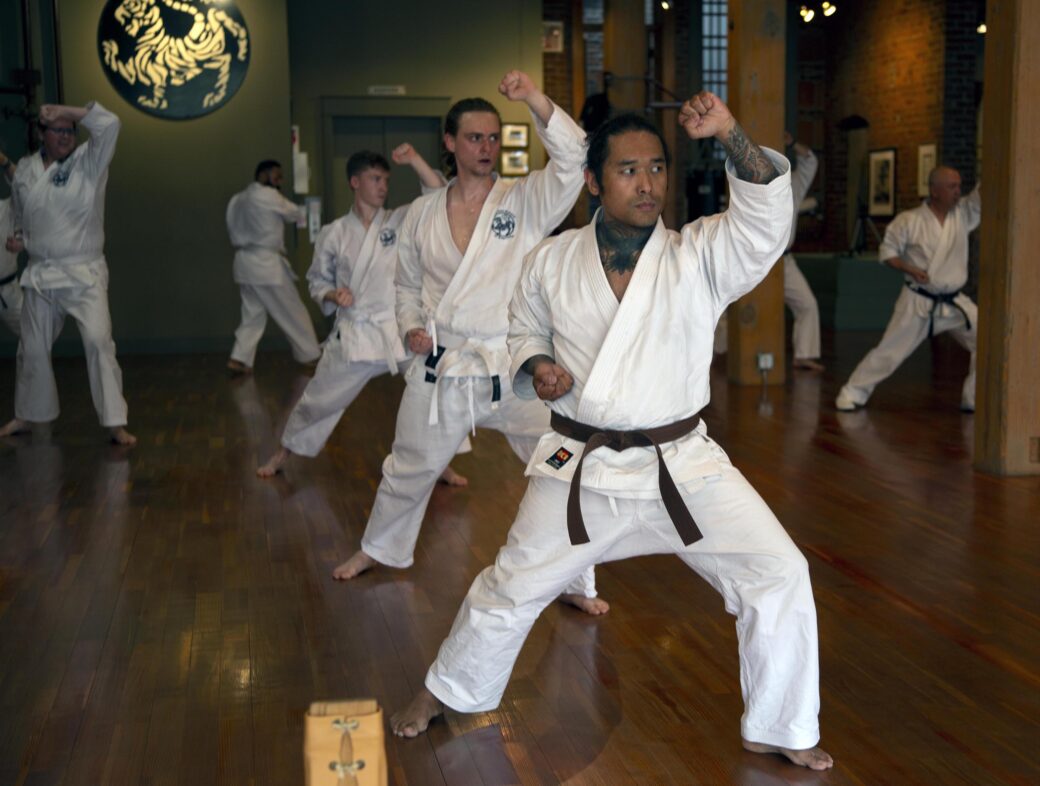
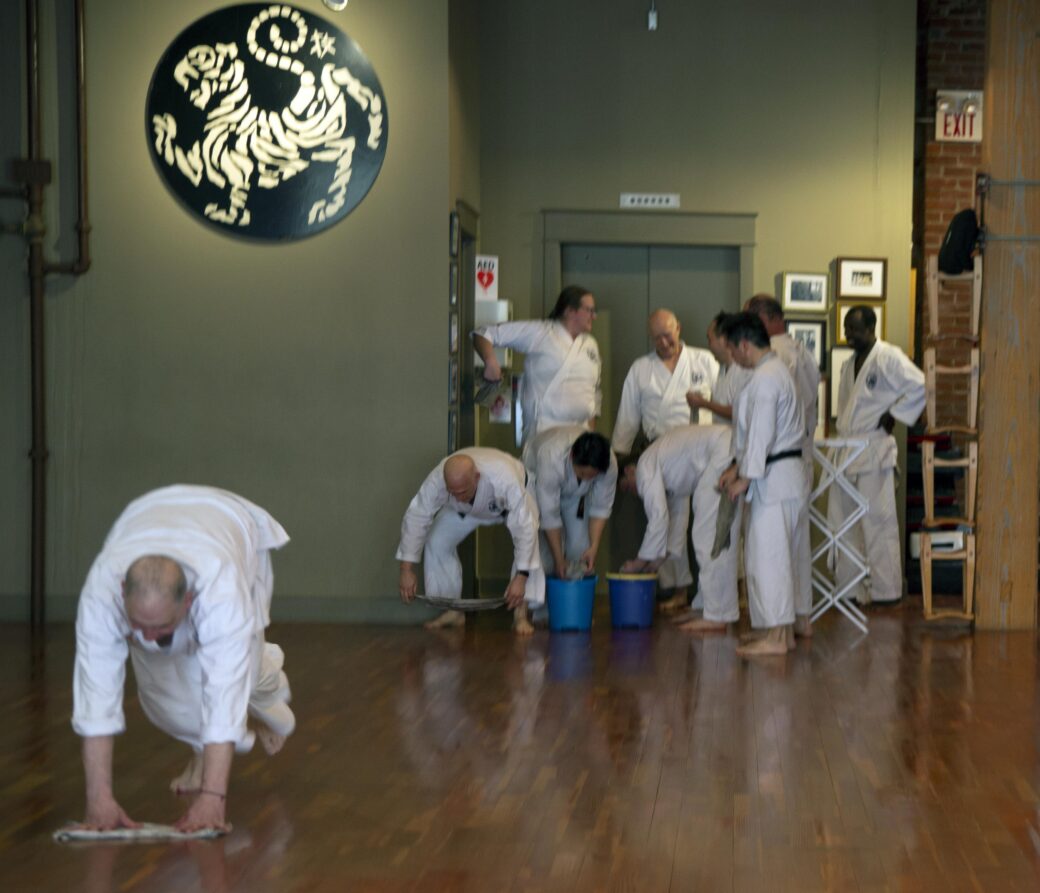
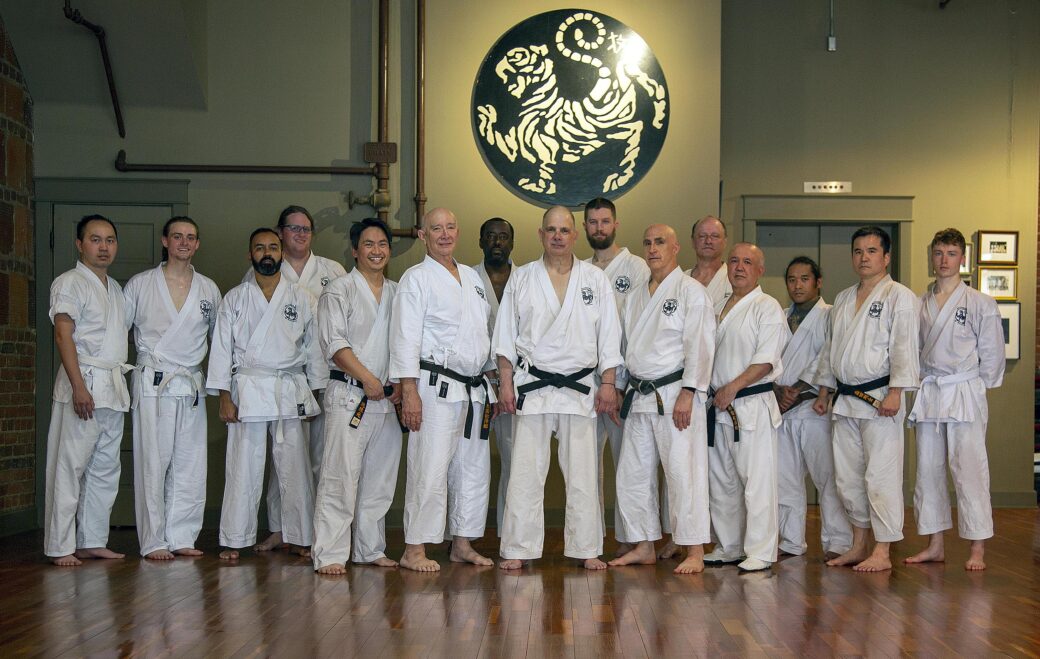
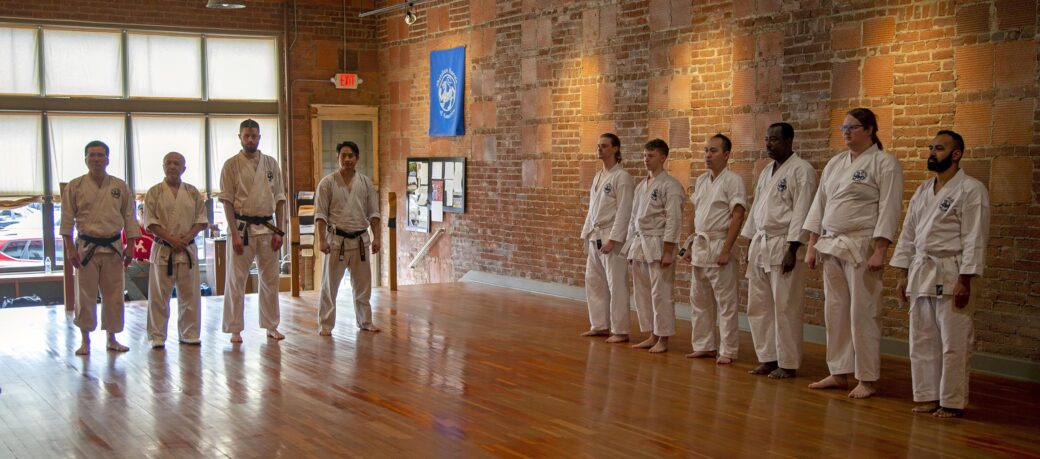

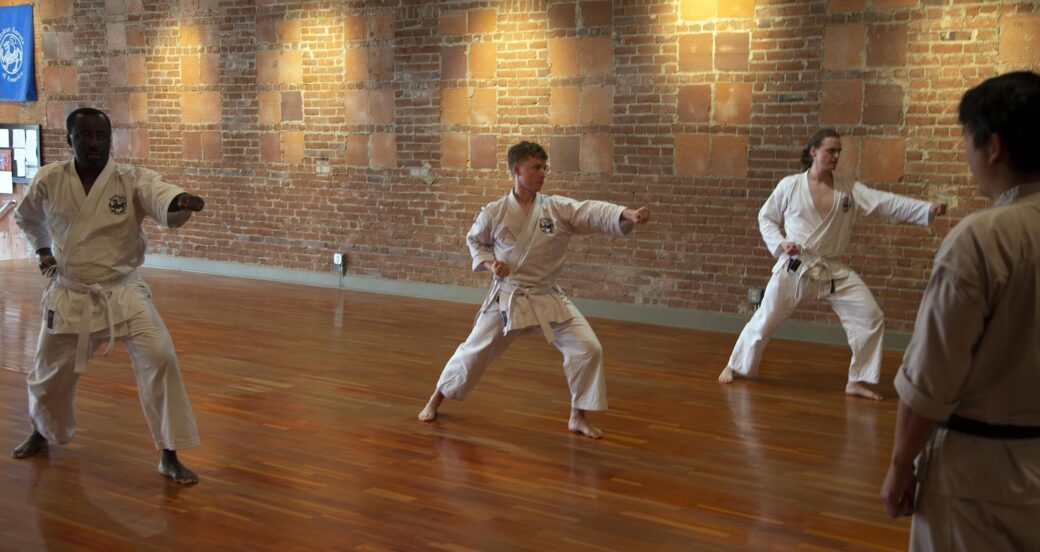
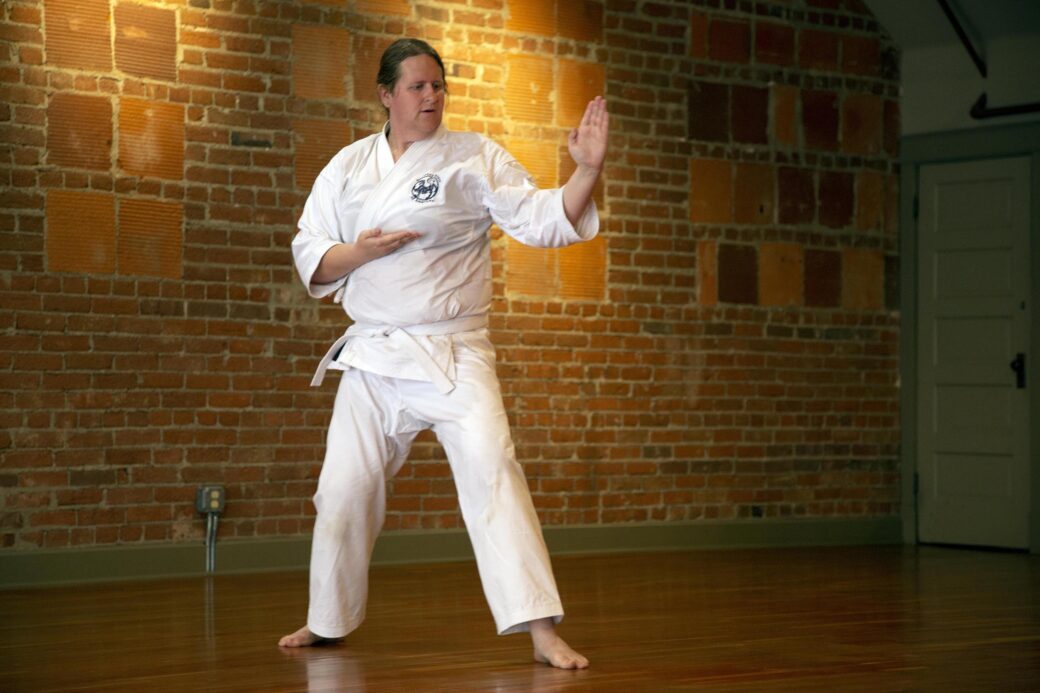
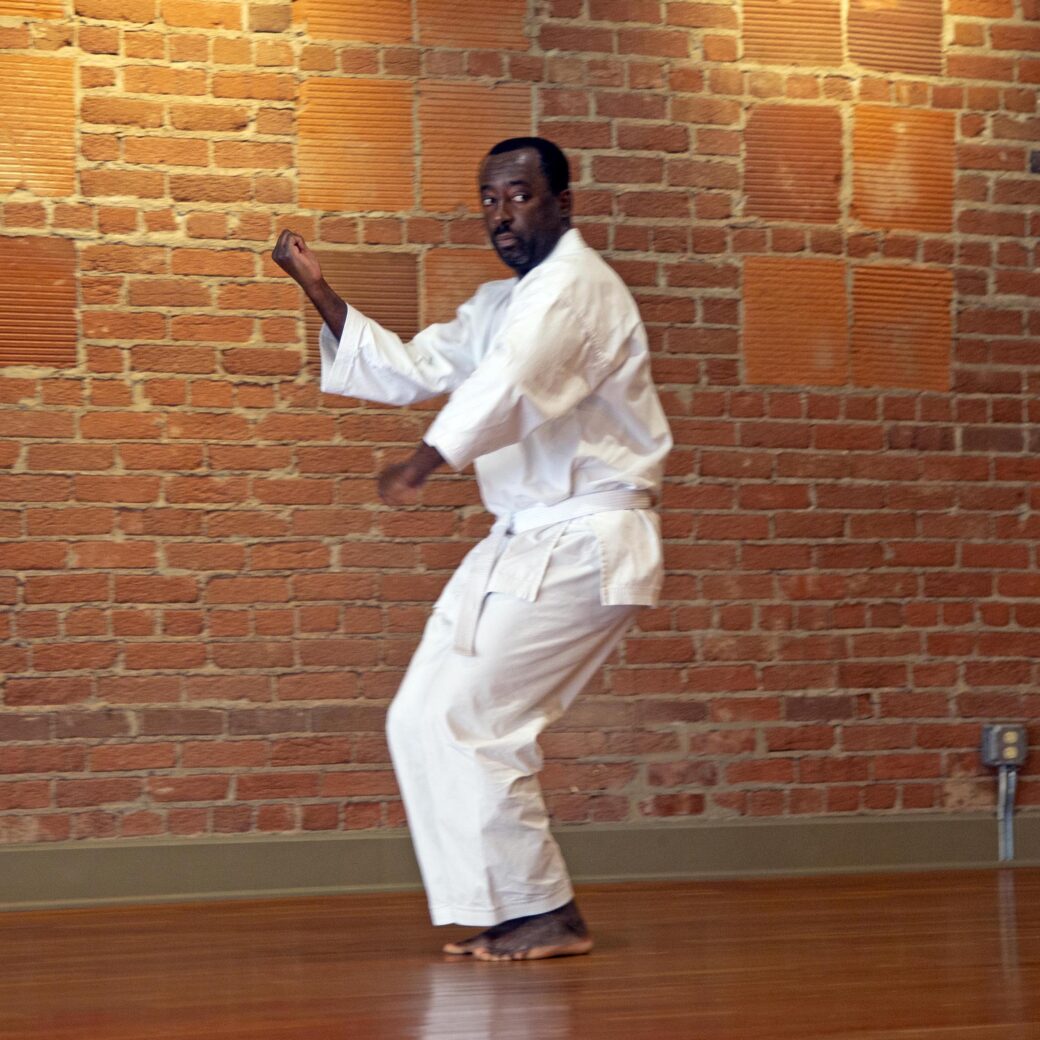
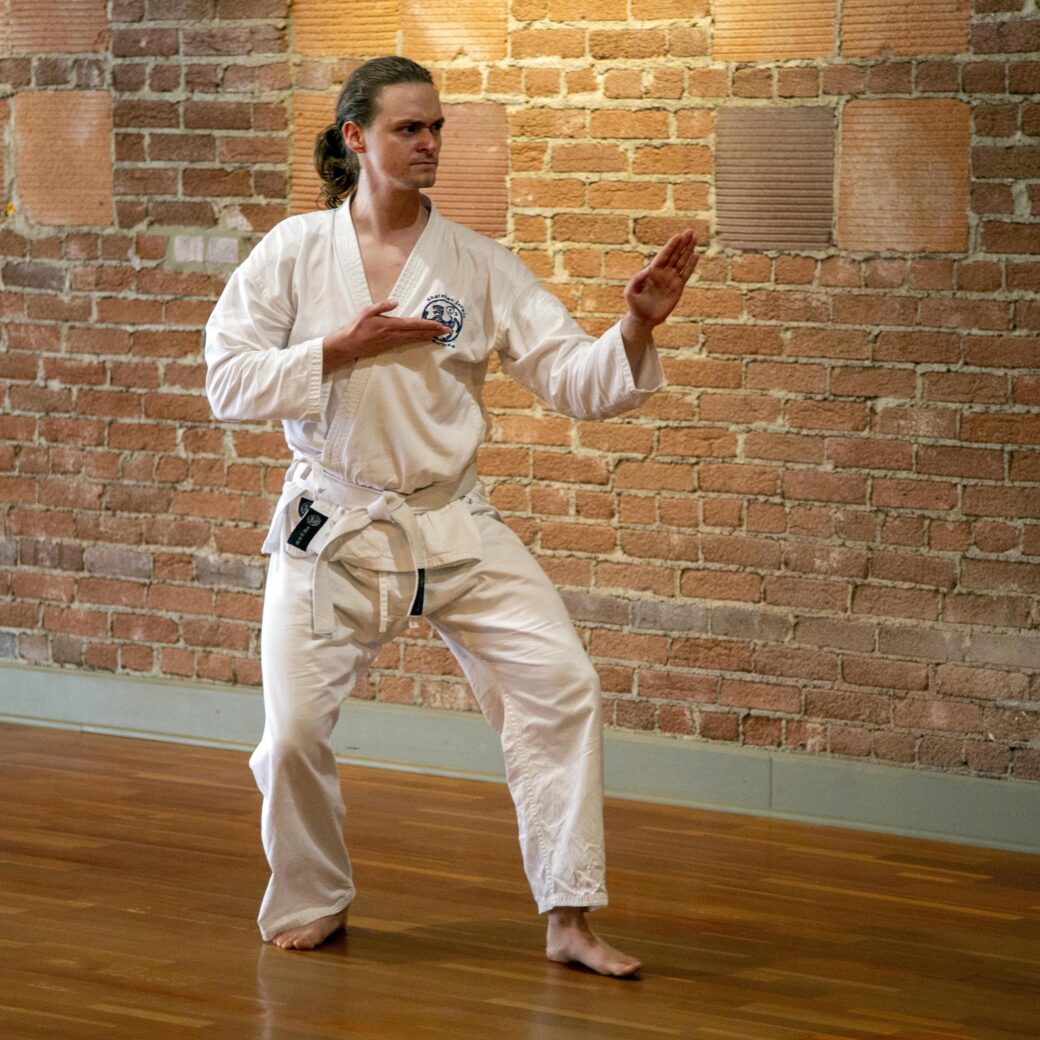
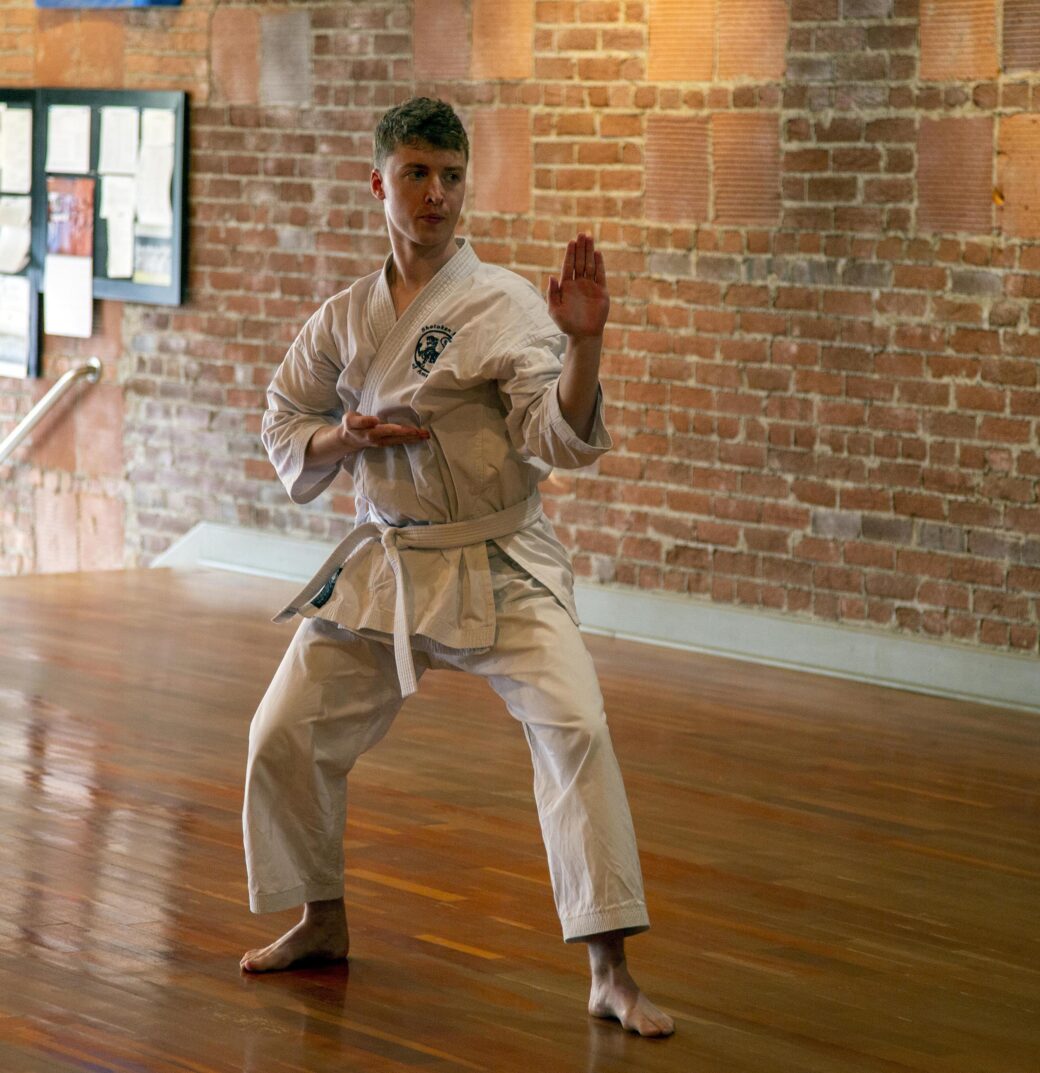
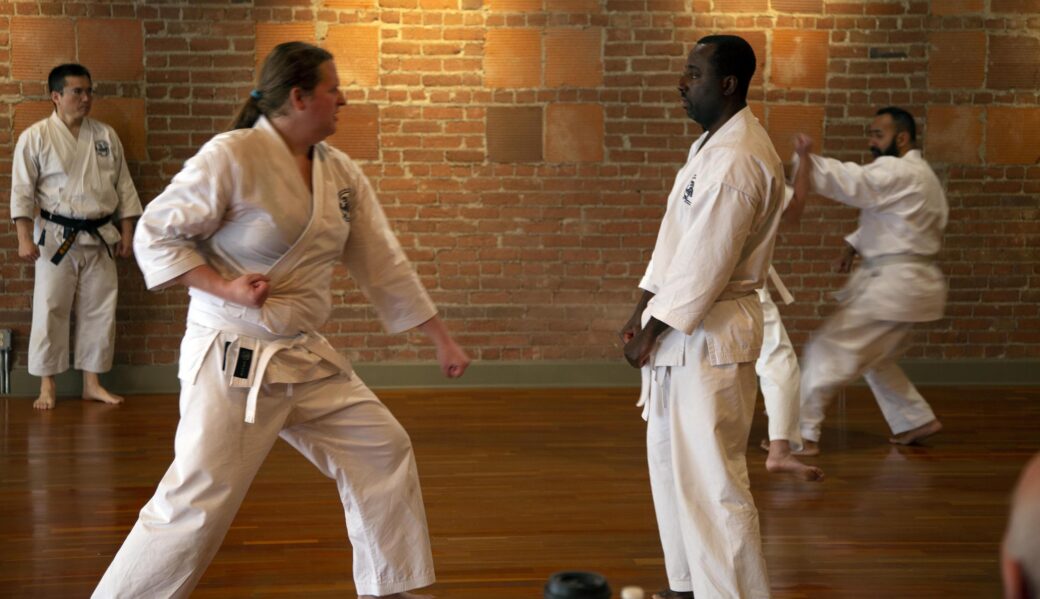
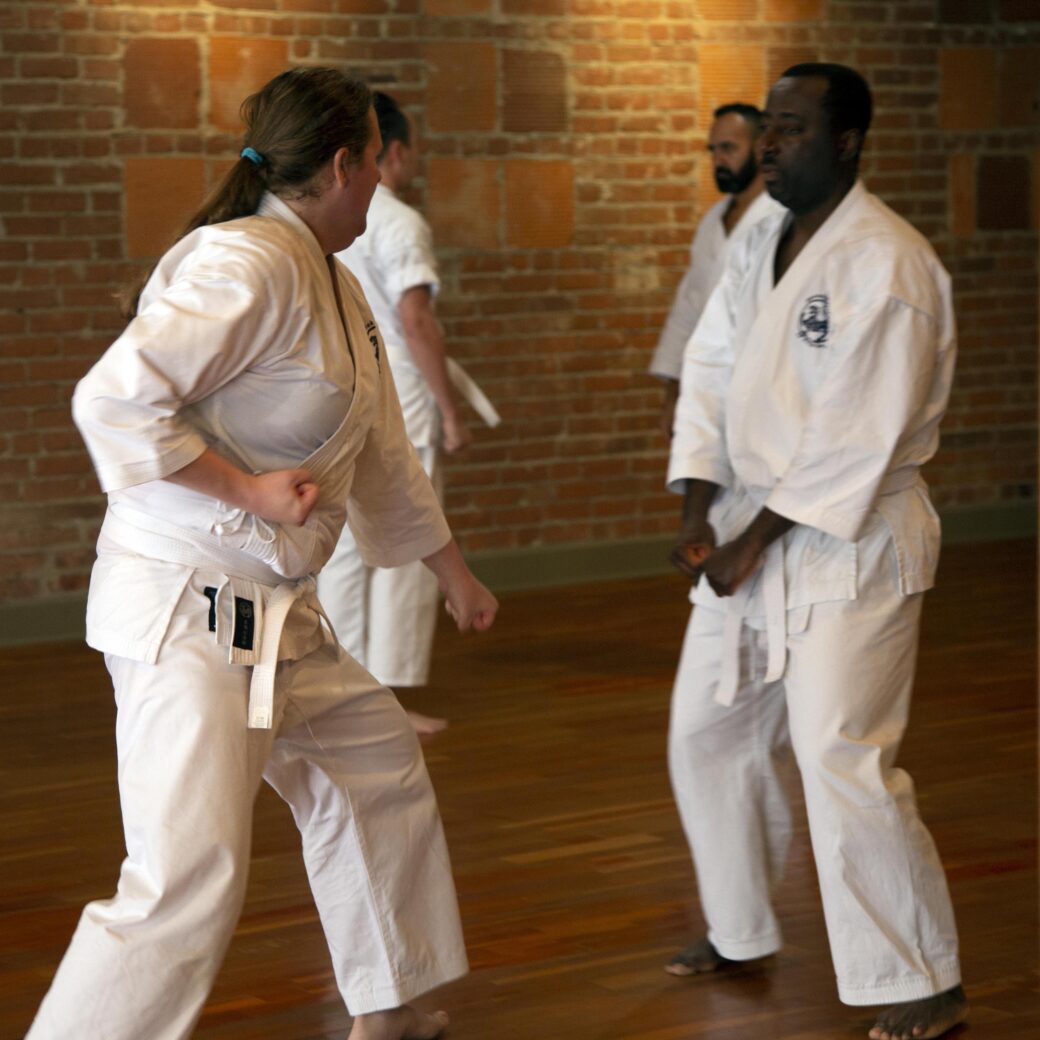
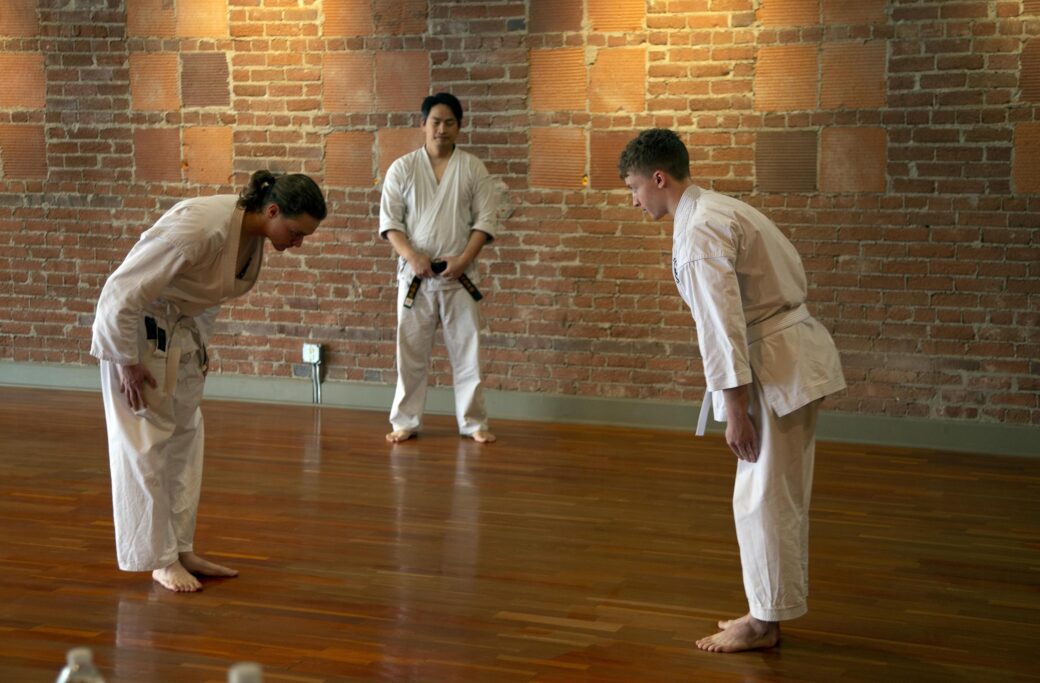
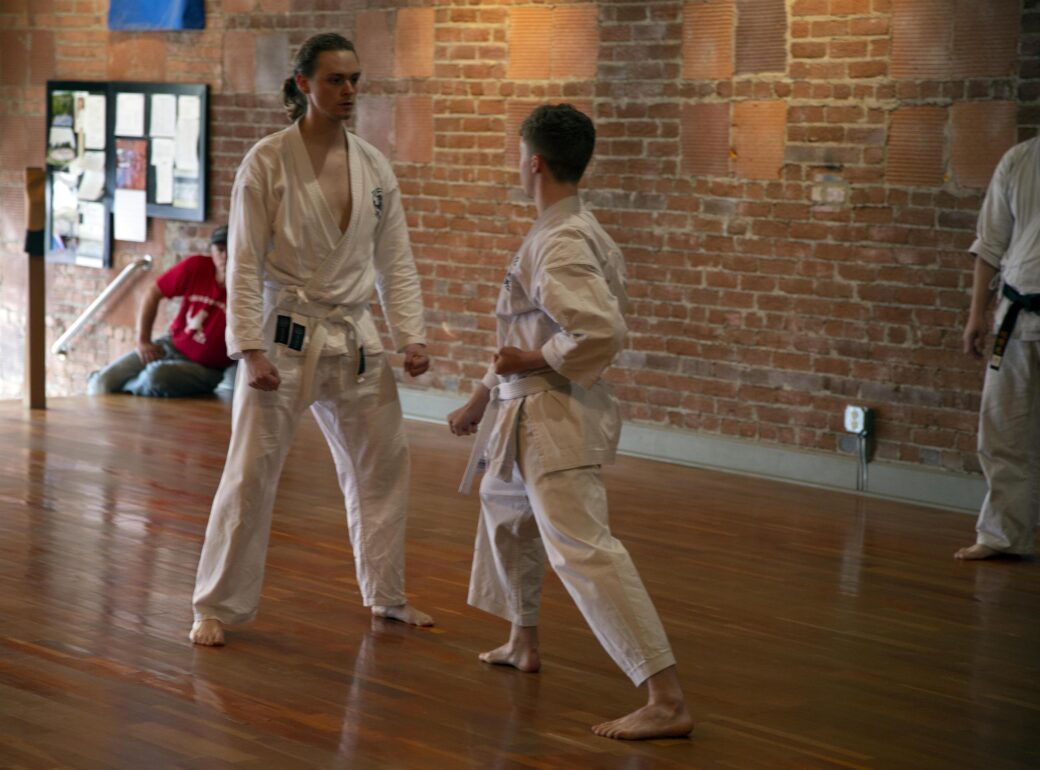
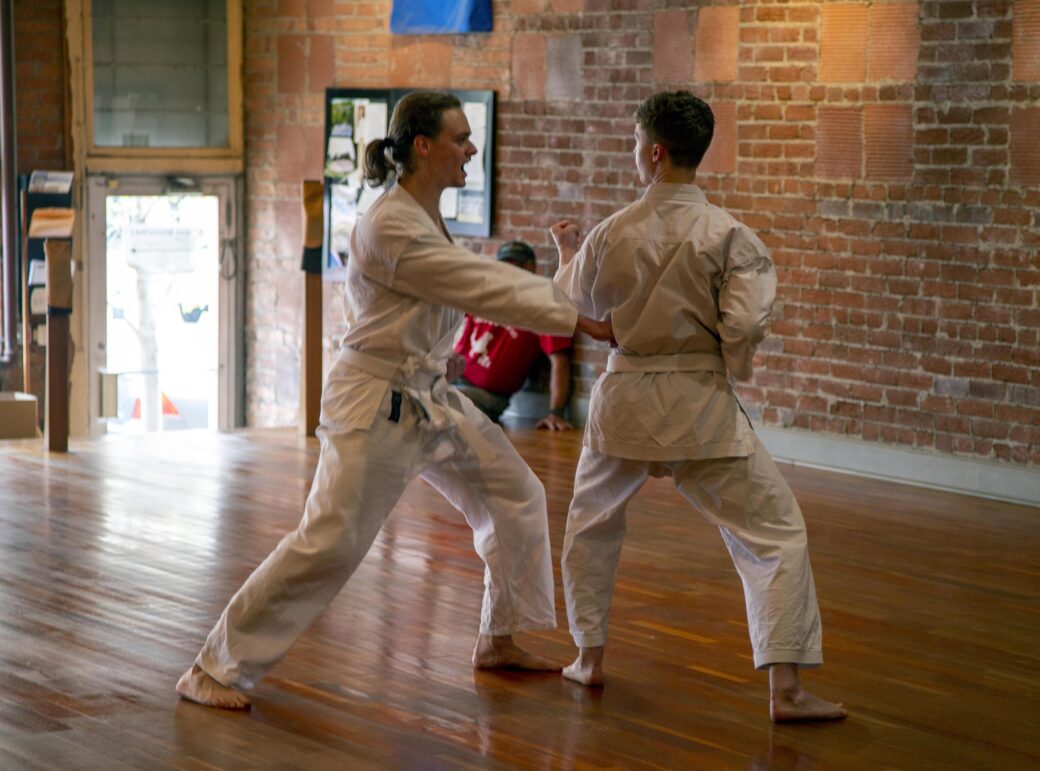
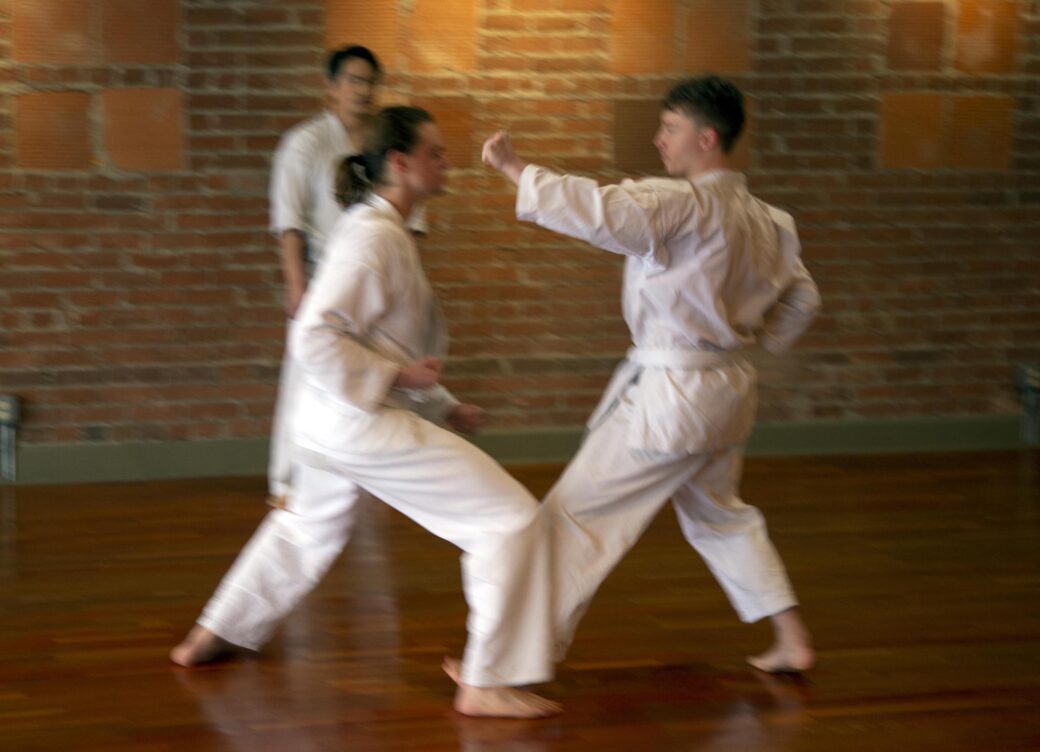
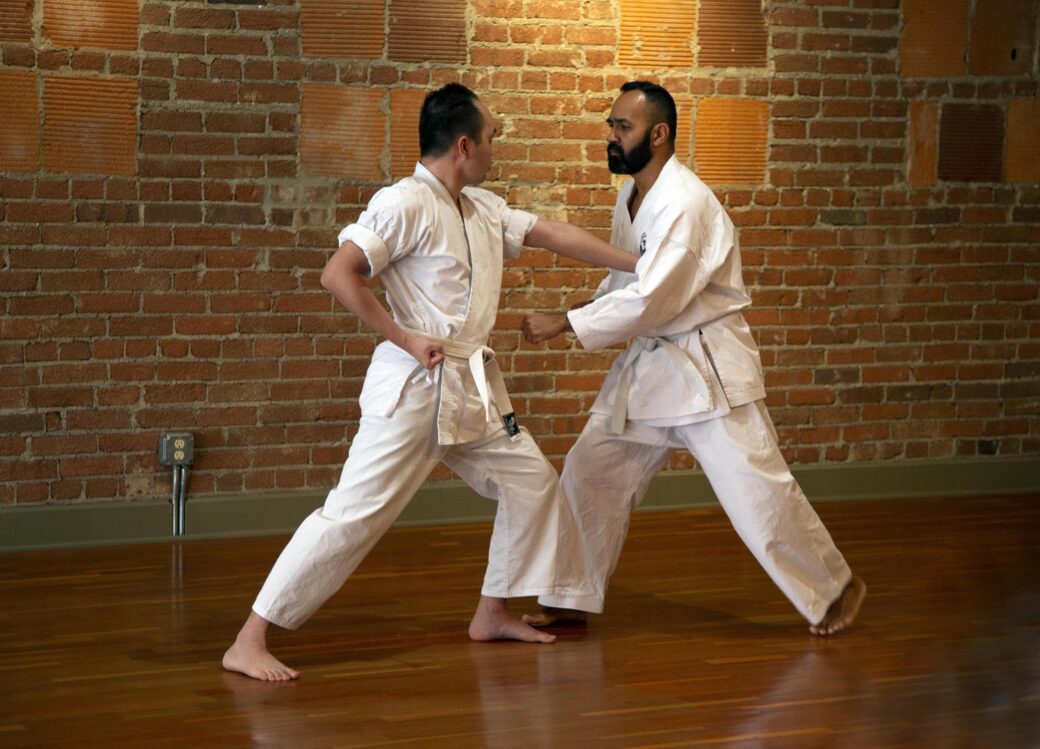
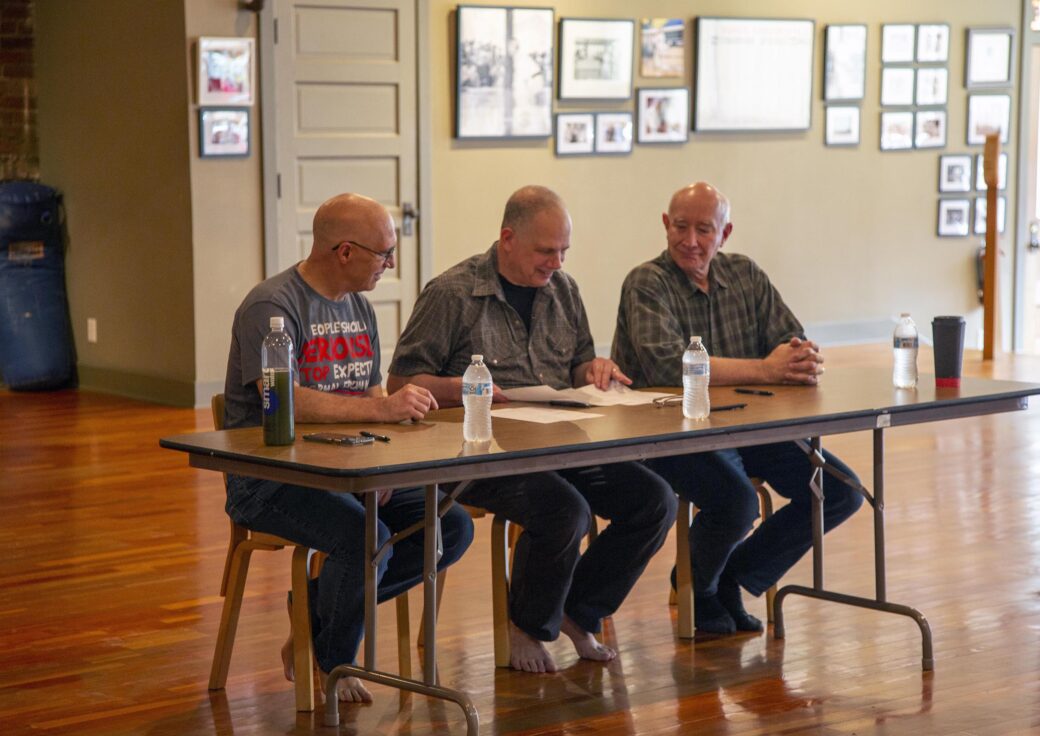
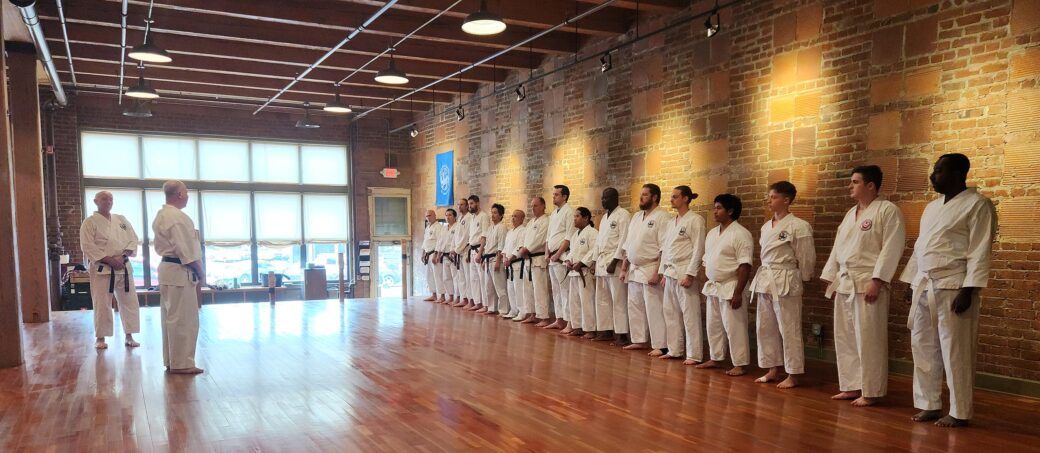
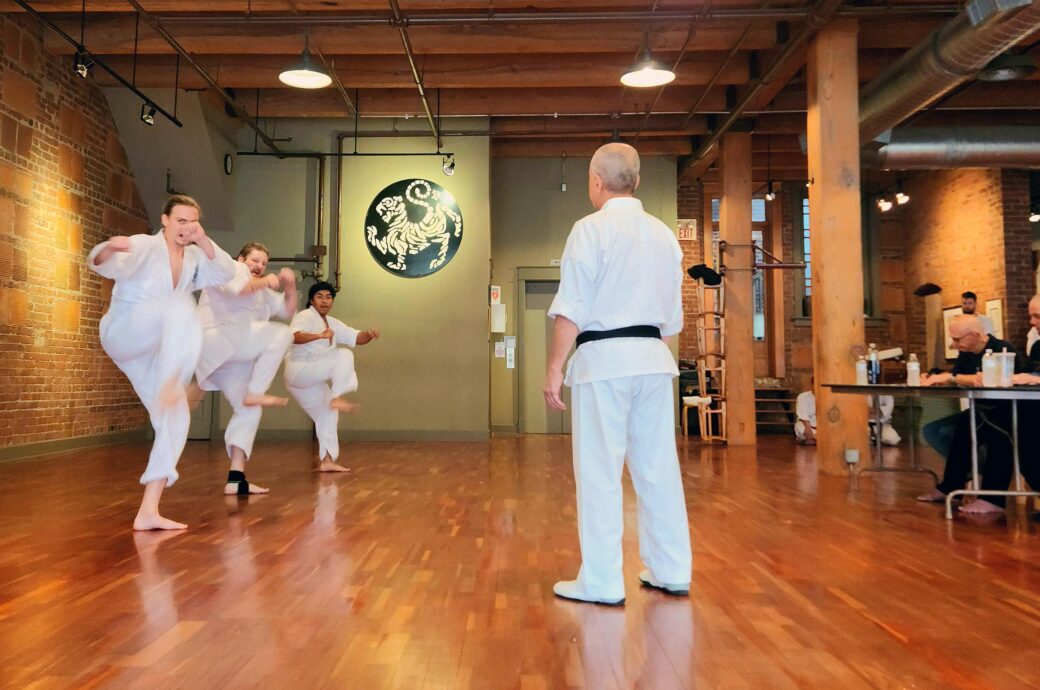
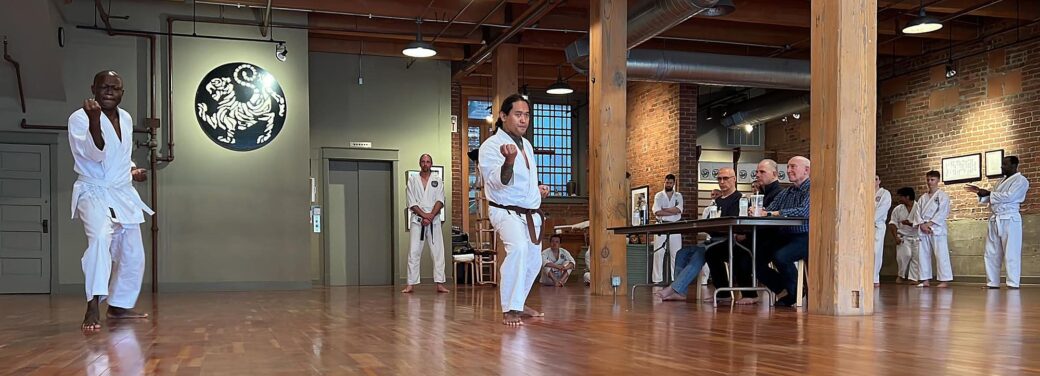
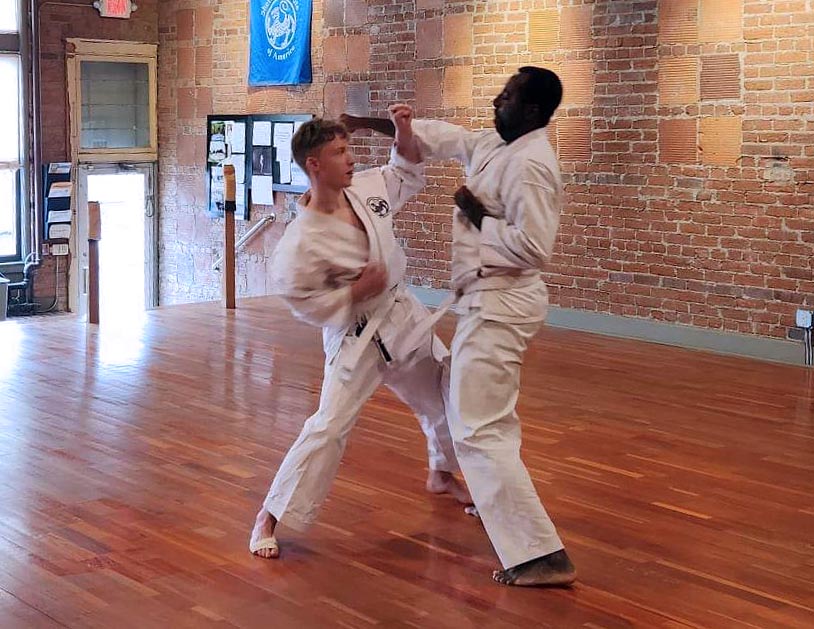


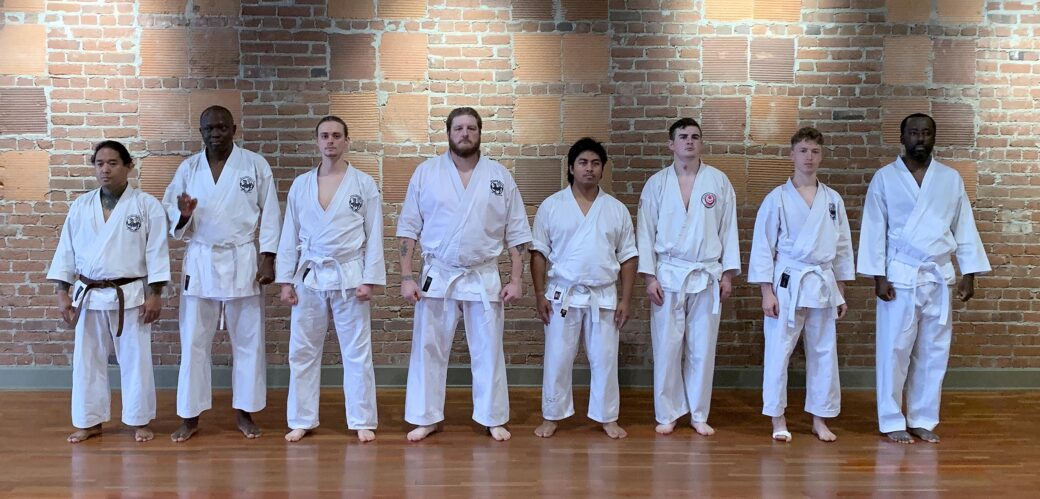
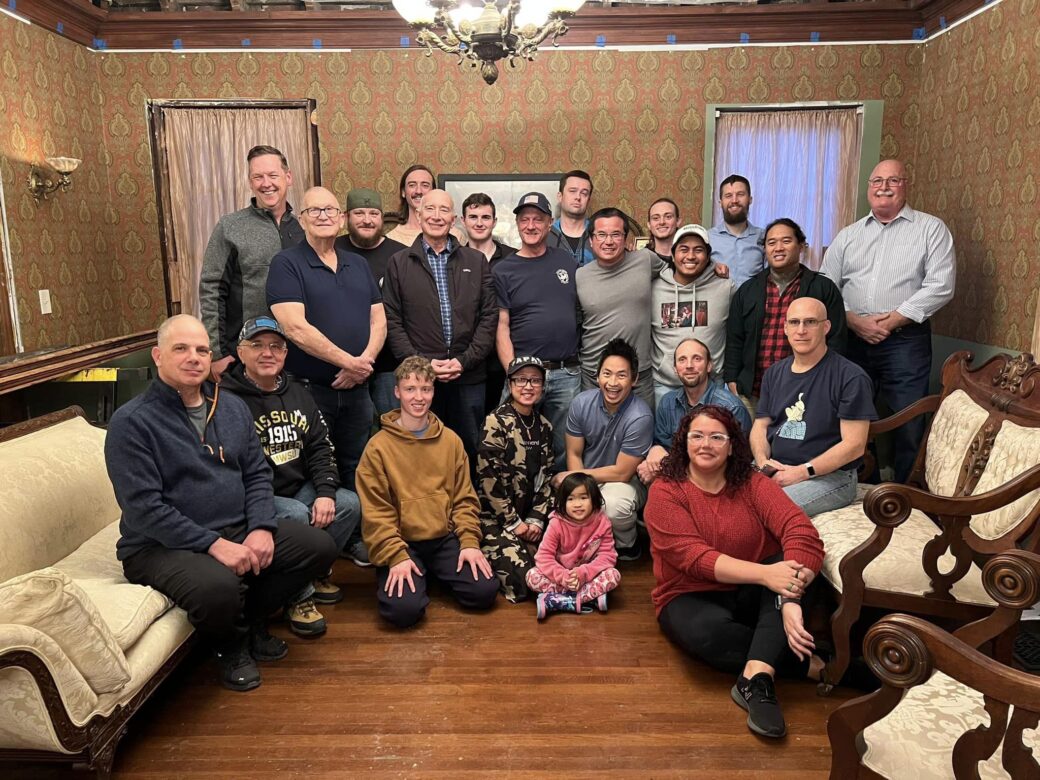

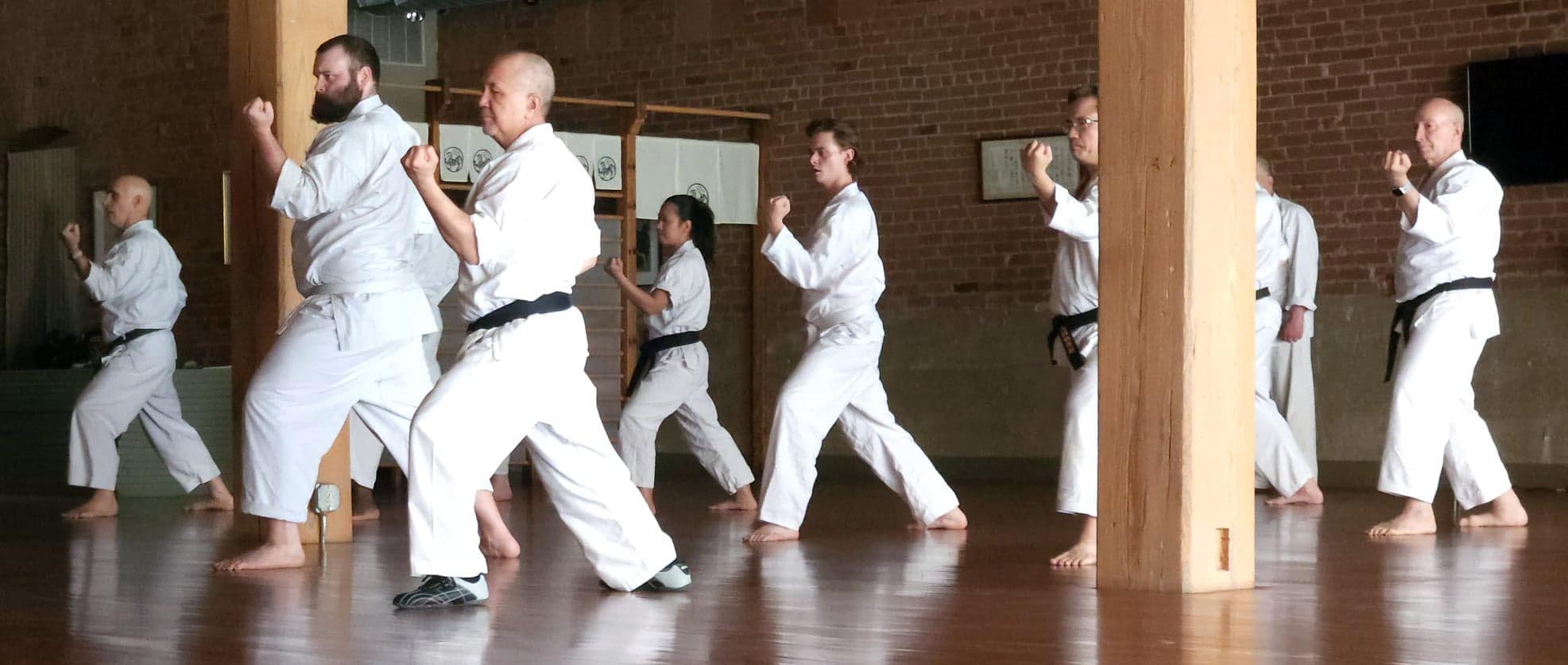

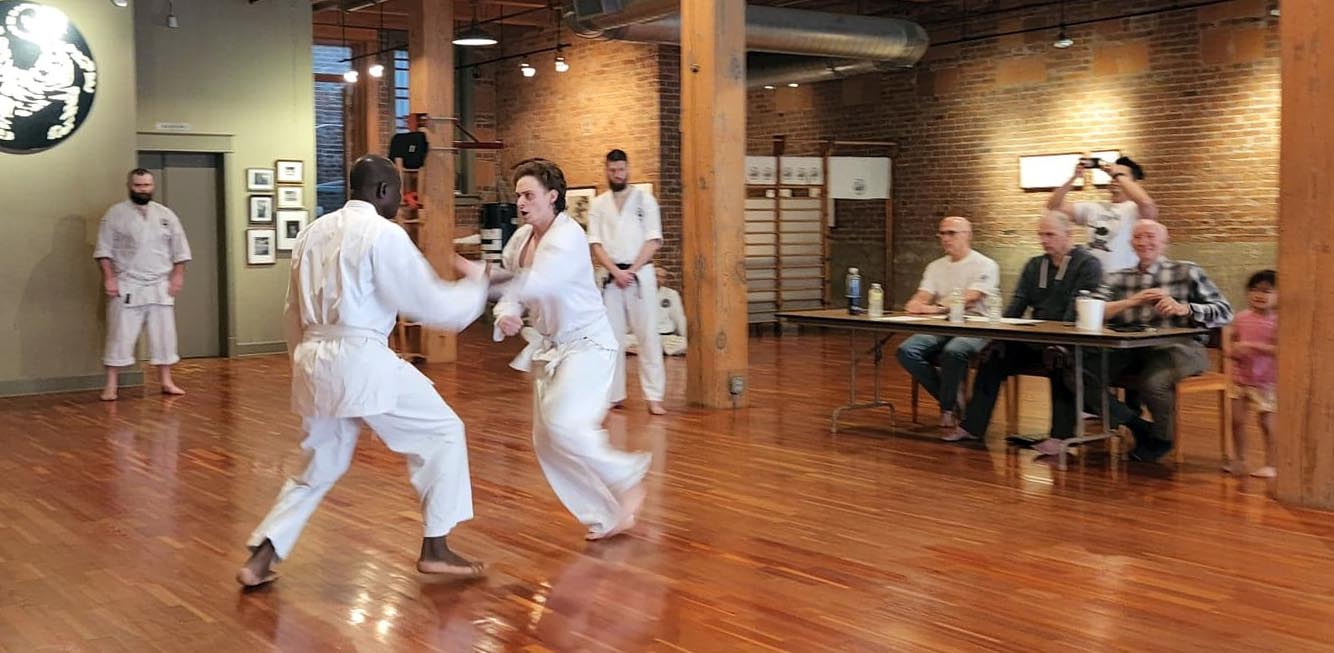
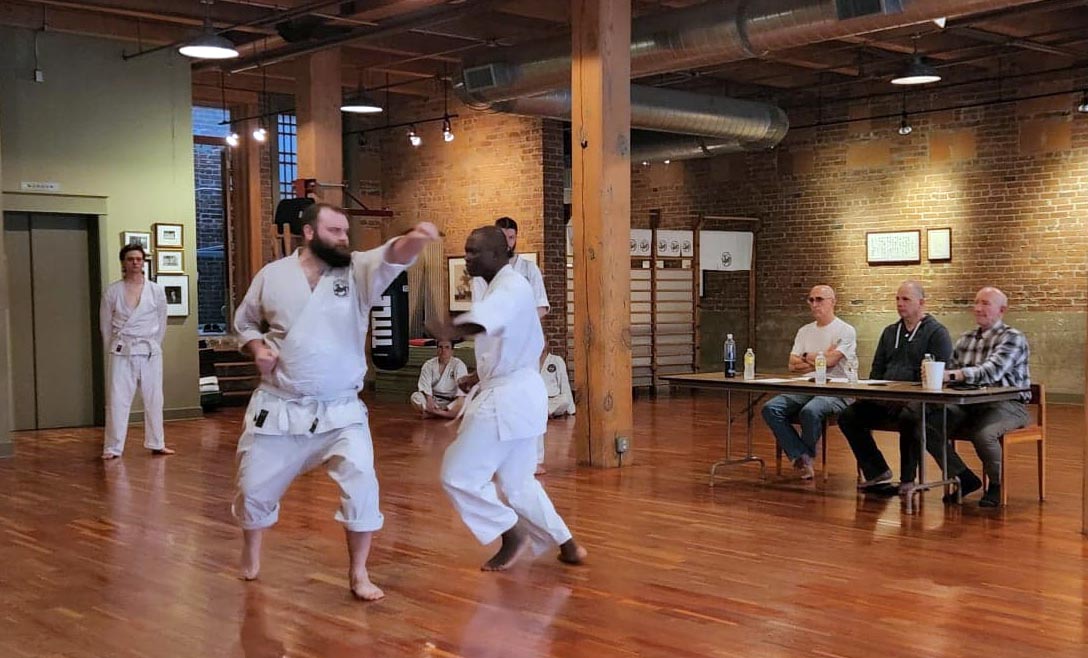
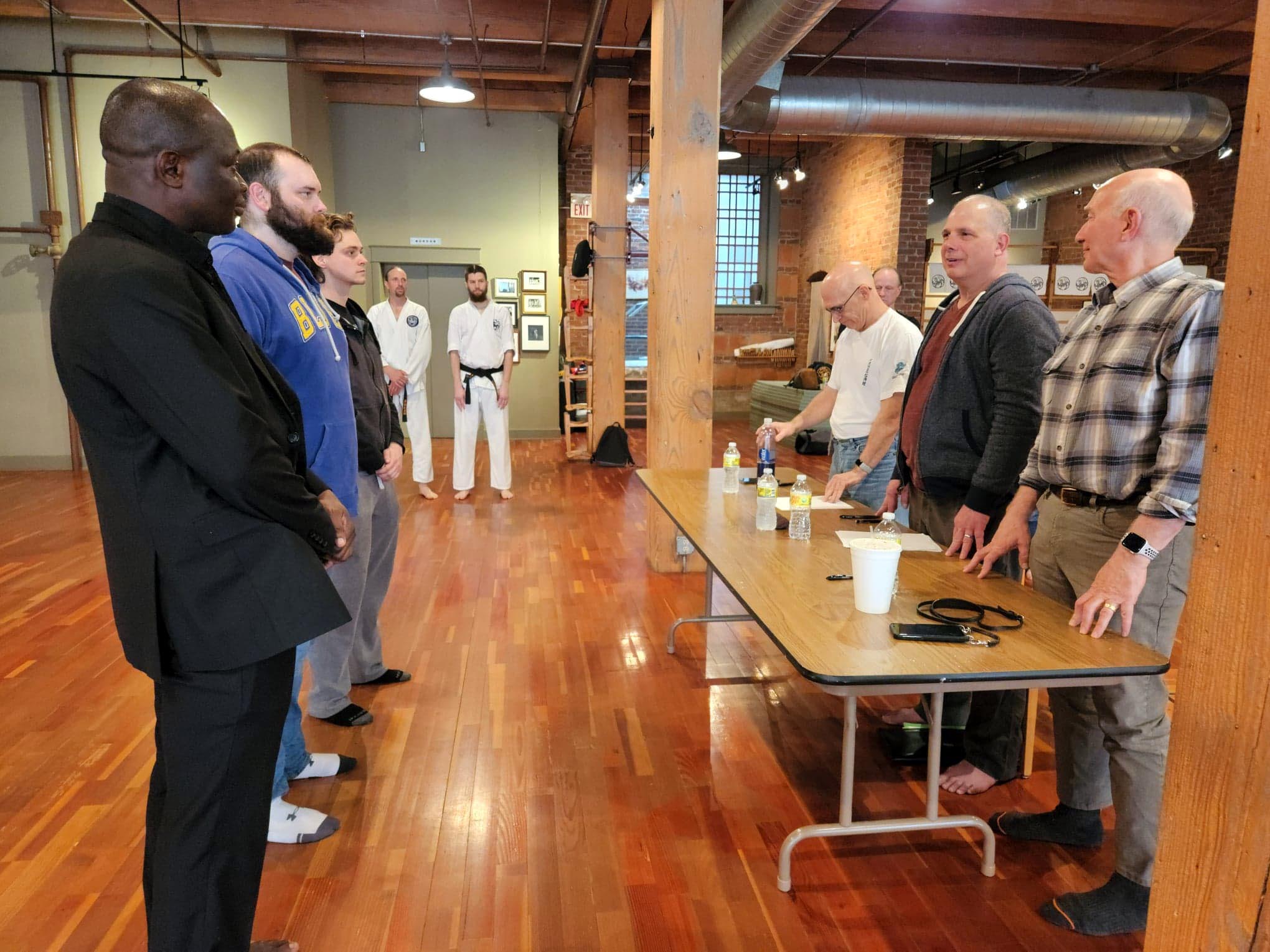
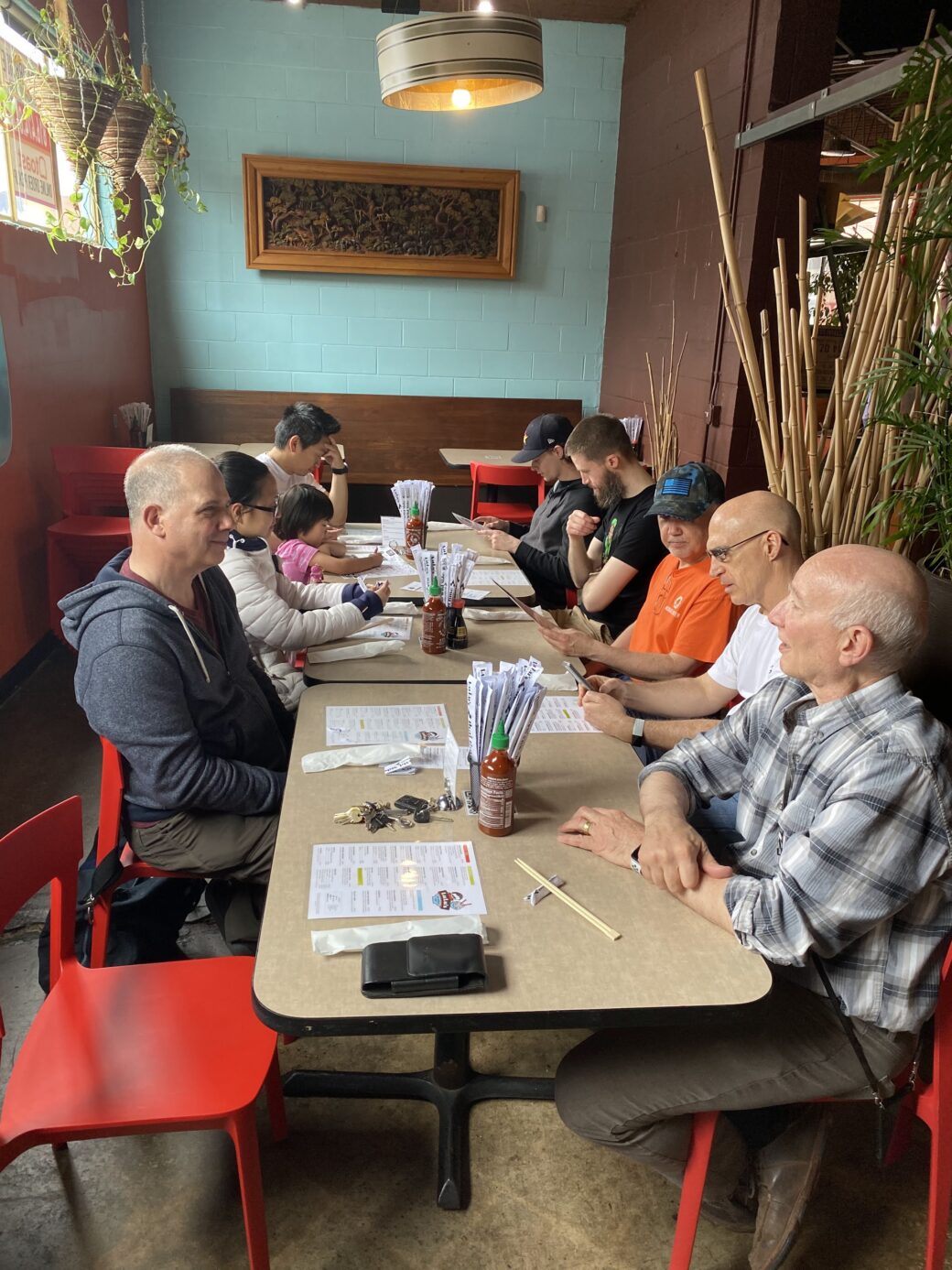

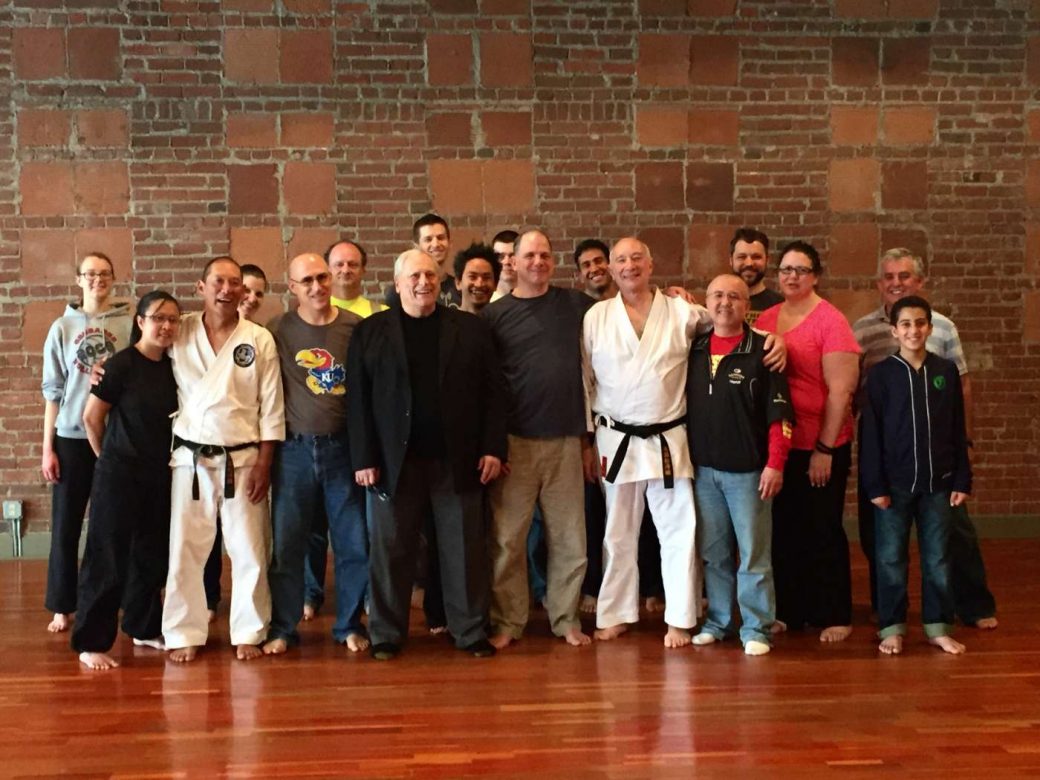
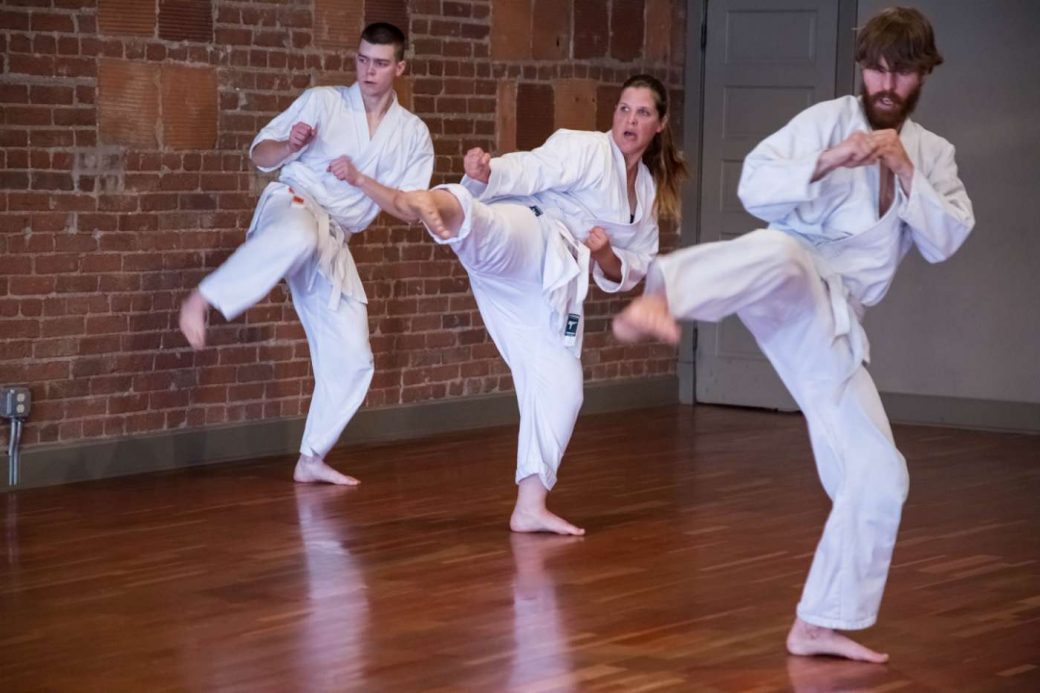
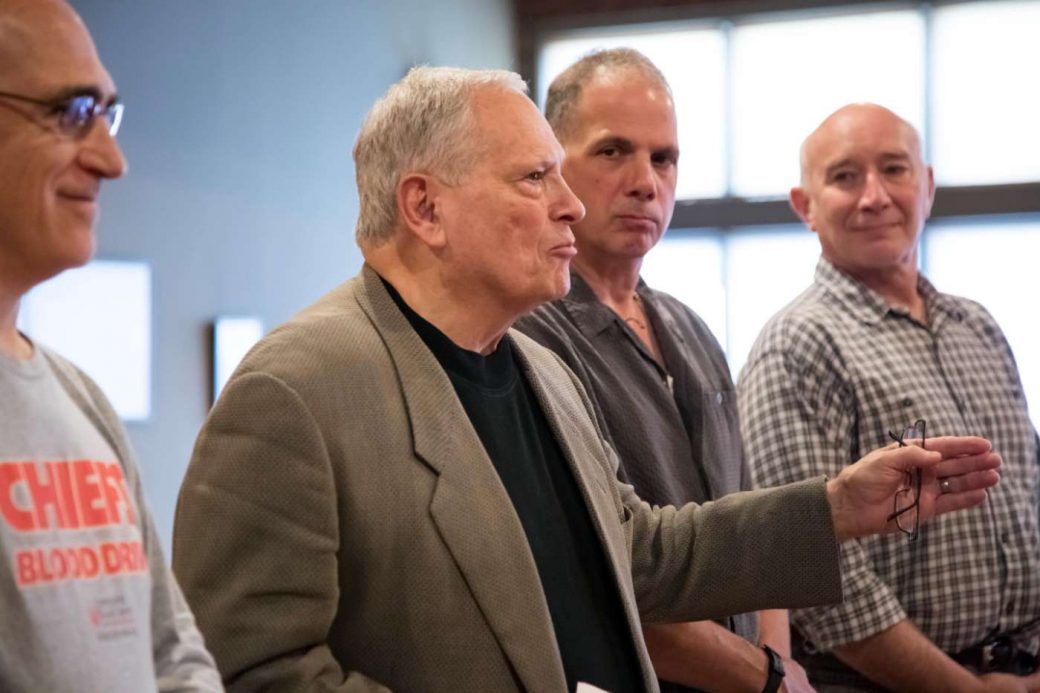
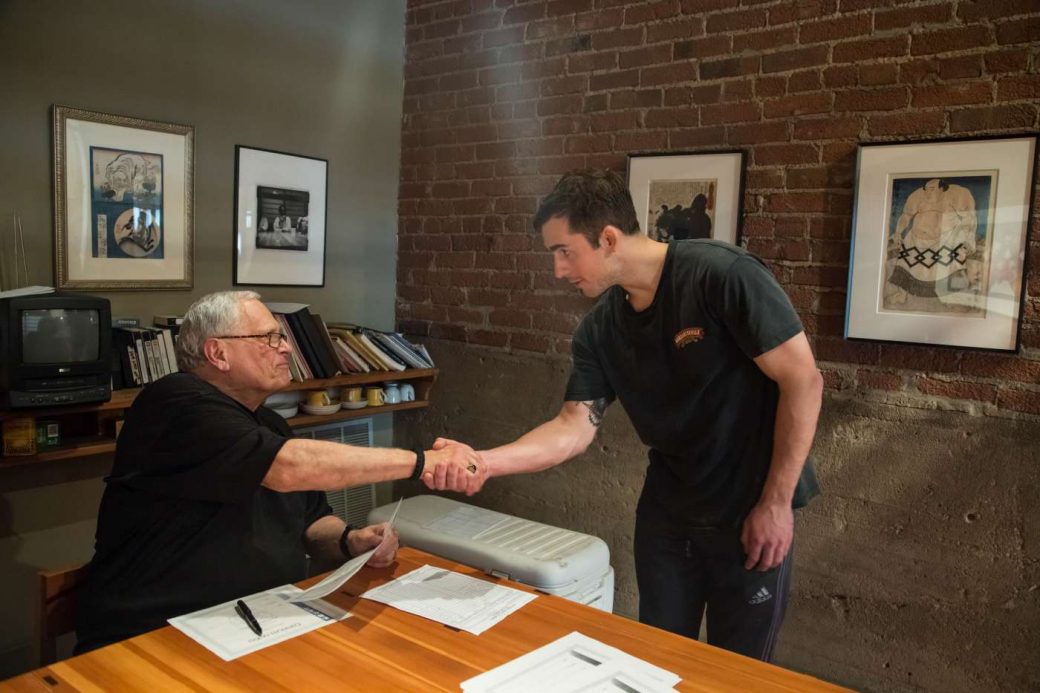

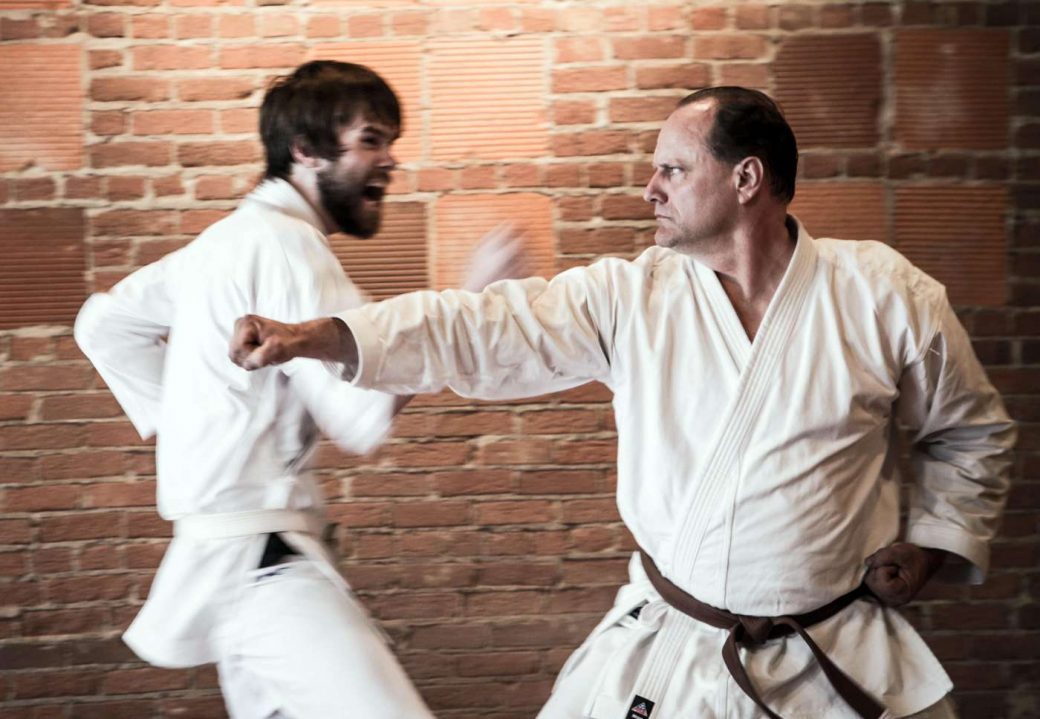

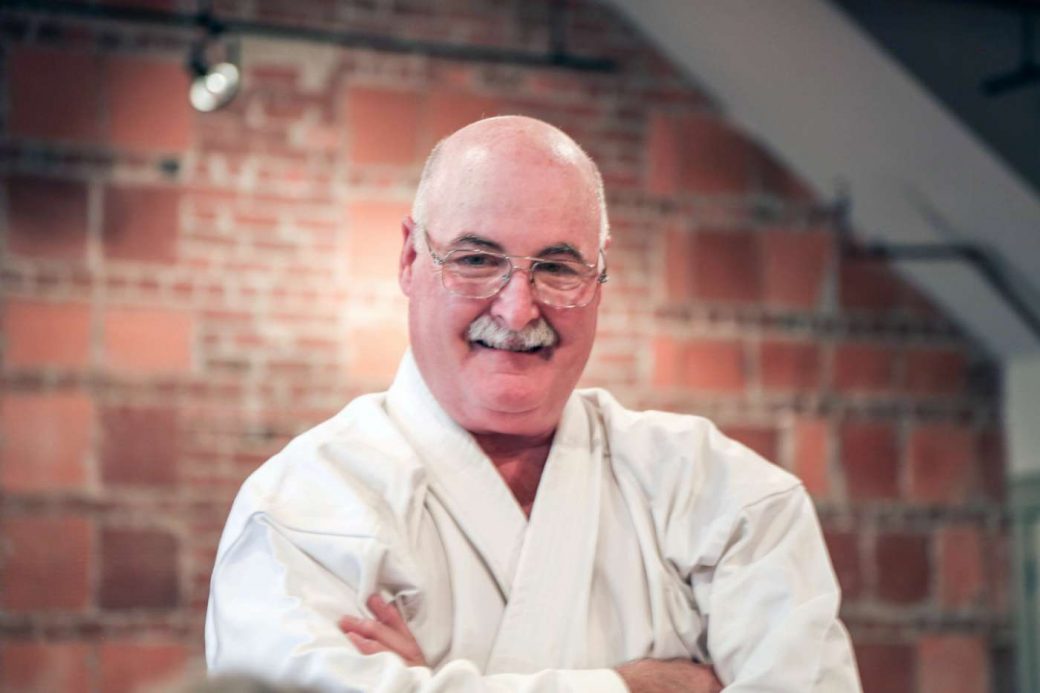
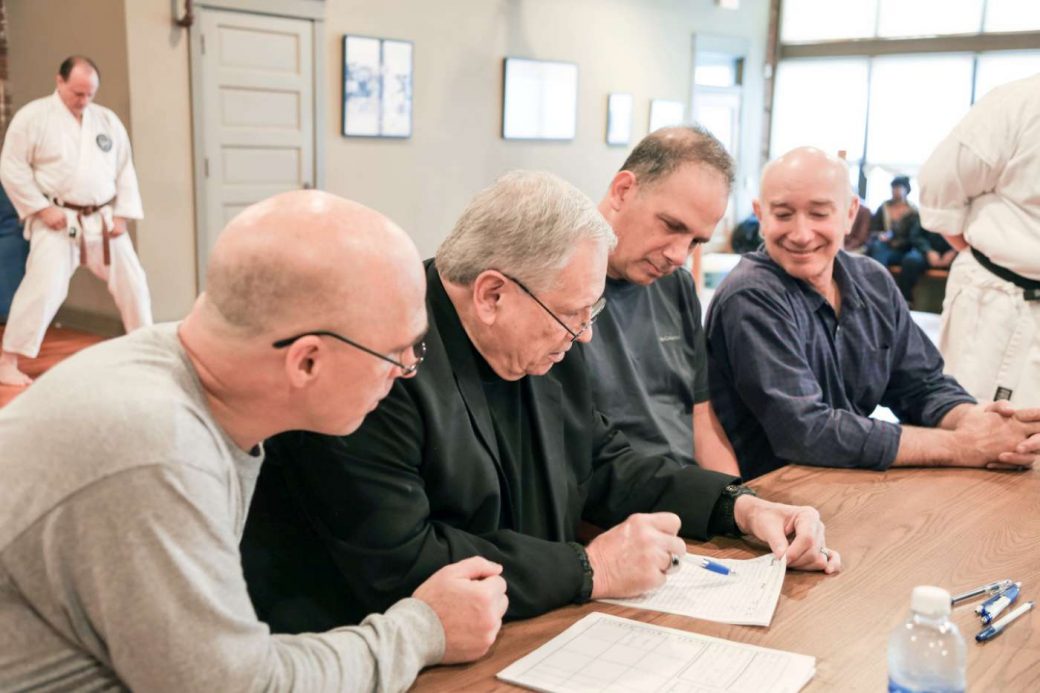
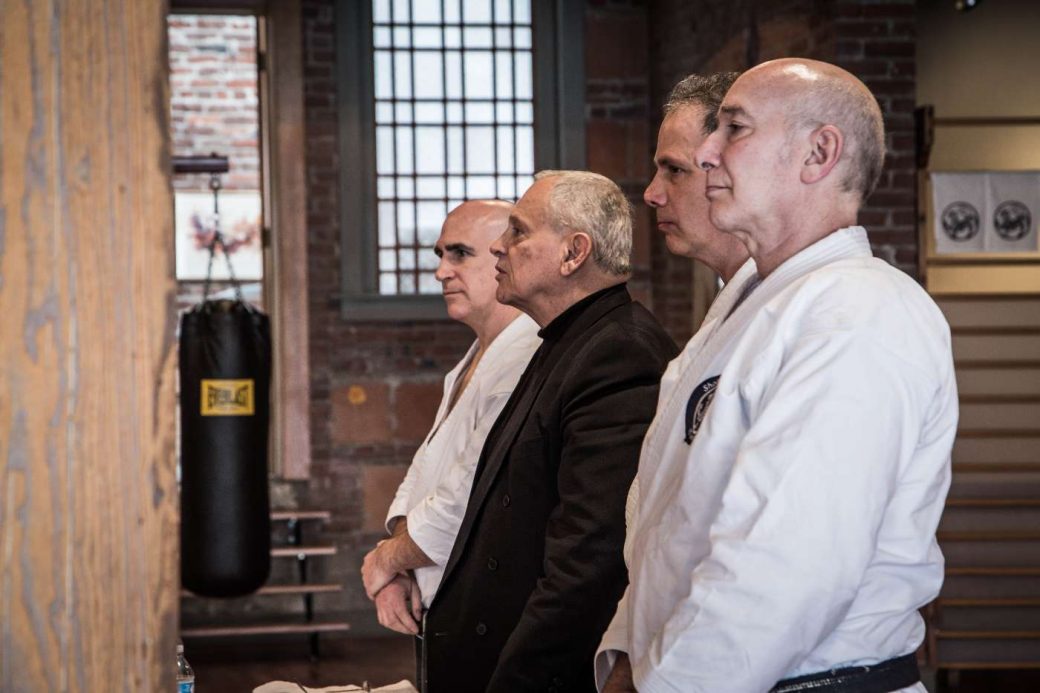
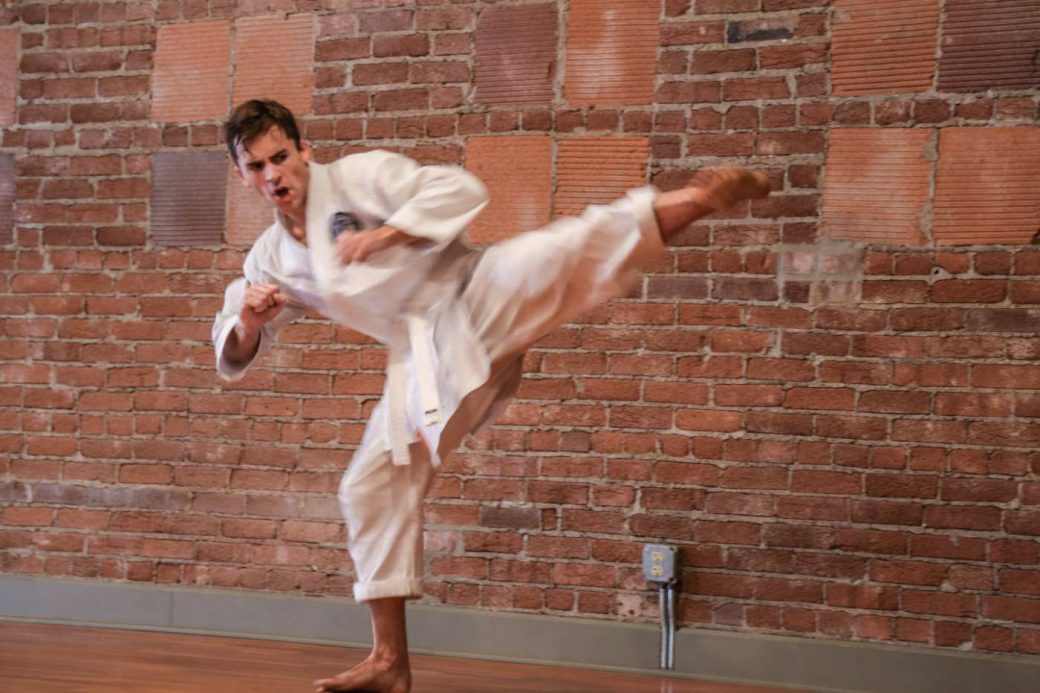
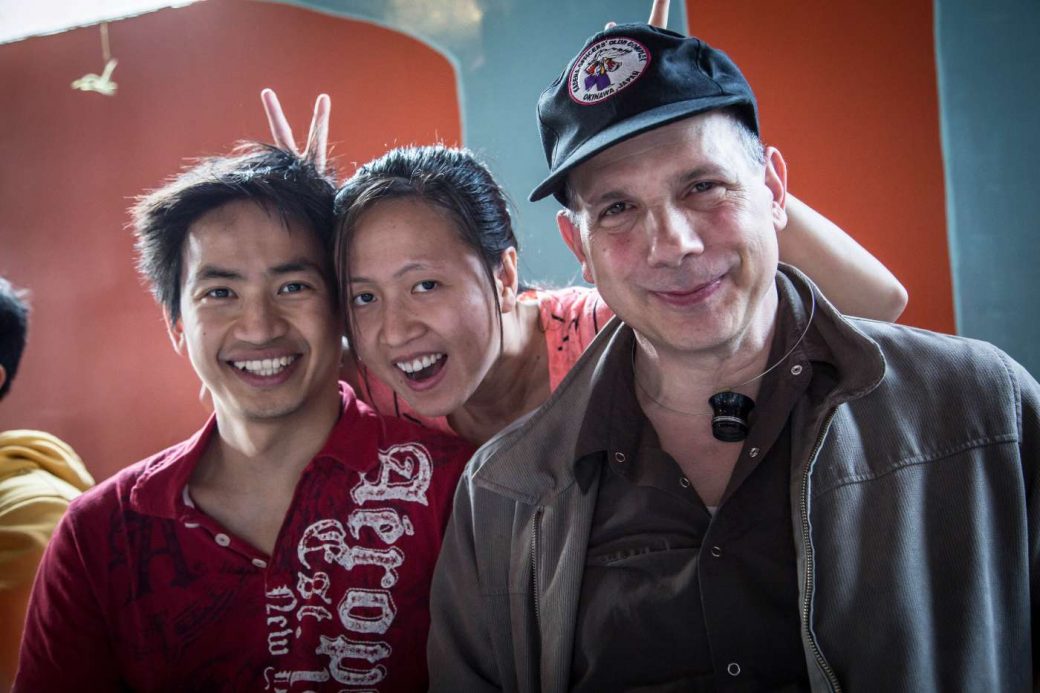
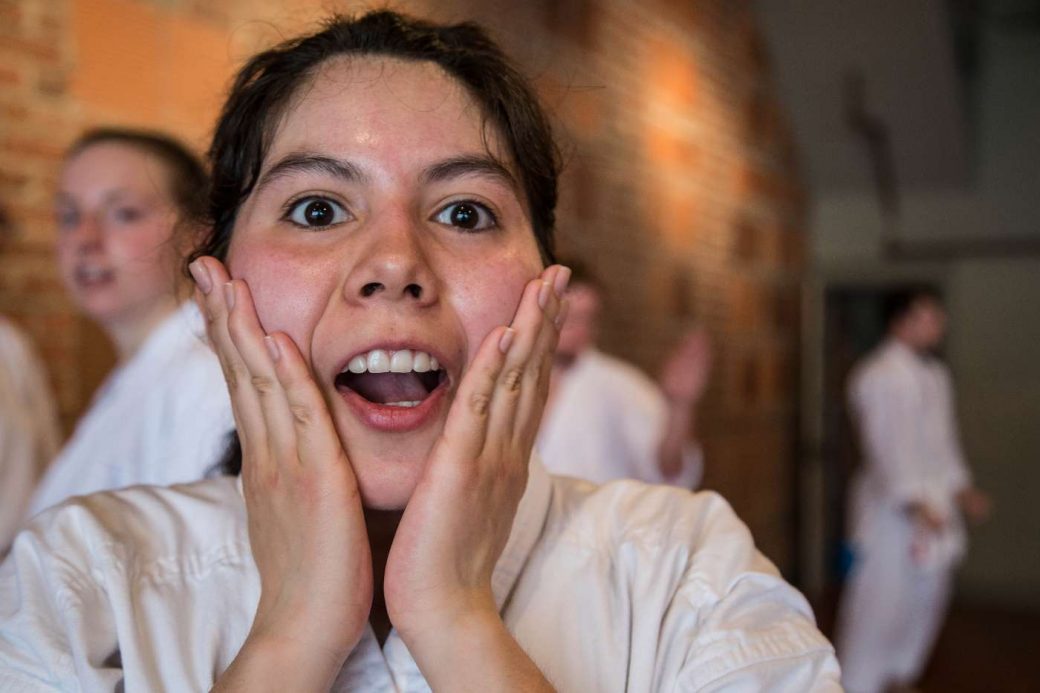


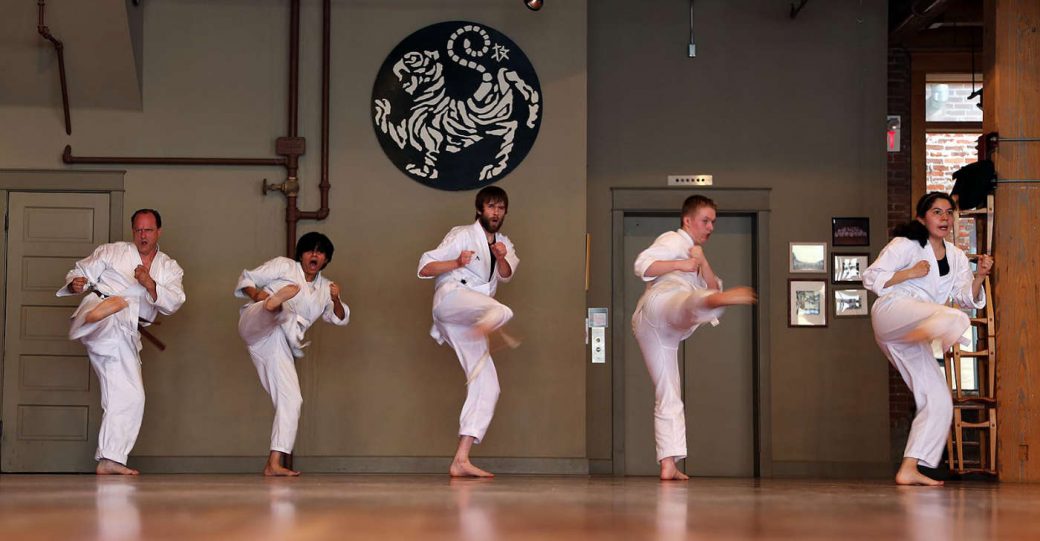
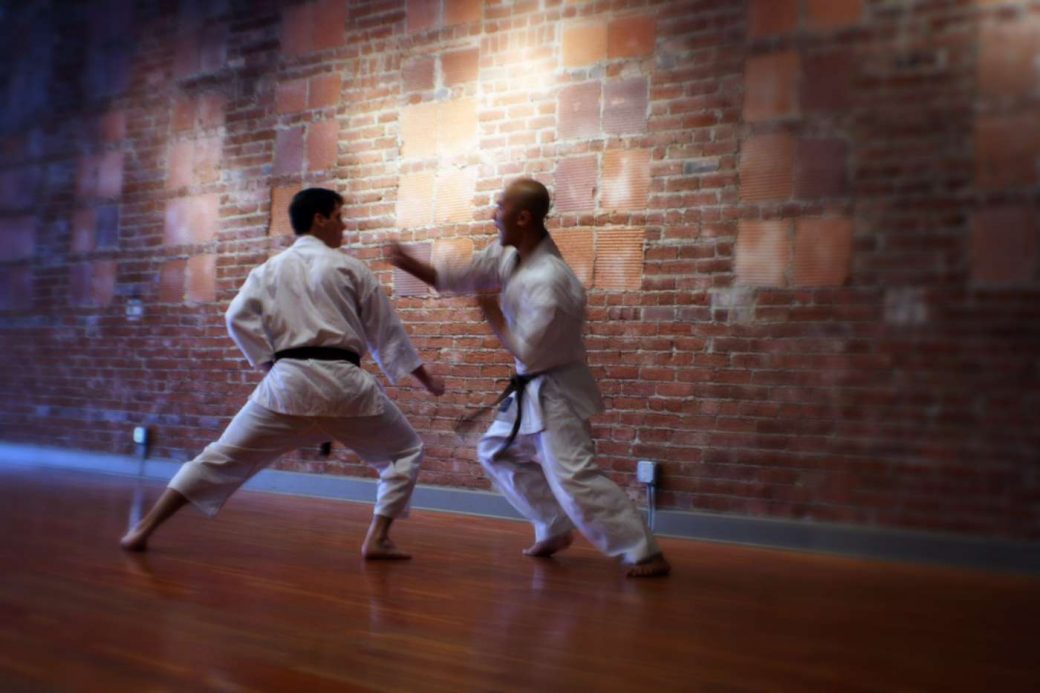

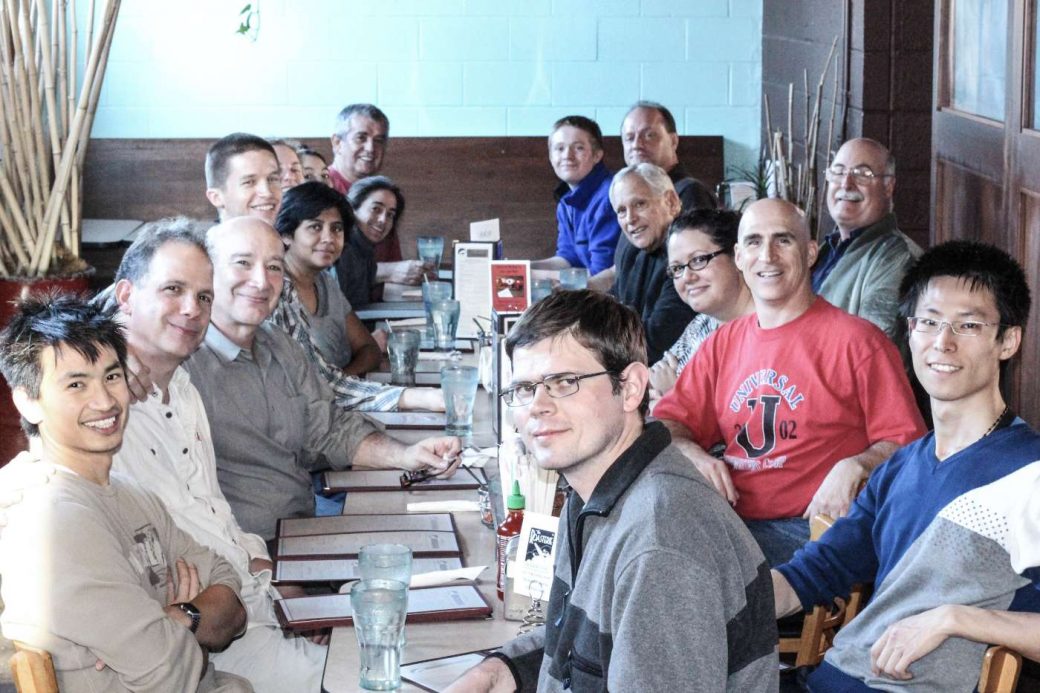
Please be clean, well groomed, fingernails and toenails closely trimmed, dressed in clean gi in good condition and ready to go at least 15 minutes prior to the scheduled start time of kyu test. Usually there is a brief but intense practice prior to kyu test — do your best!
The following is excerpted from NOTES ON TRAINING by Tsutomu Ohshima, published by Pine Winds Press, 1998 (252 pages).
We make kyu tests in April and November each year. April 26th was the day Master Funakoshi passed away and November 10th was the day he was born. We make kyu tests during these months to remember those events. This is how I originally scheduled kyu tests, twice a year, in Southern California.
There are two points to always remember in a grading. First, we start with rei and end with rei. Second, the exam is not our goal; it is only one kind of practice for us. No matter where, no matter what, we have to express our best. This is the reason we continue to practice, especially people who get excited or who choke up in grading. They get in front of their seniors and cannot express their best. We practice so we can calm down. We want to be very alert mentally. Physically we try to be relaxed, with no conscious power in the shoulders and with our feeling going down to the lower abdomen.
When you present yourself to your seniors for grading, I am sure you feel excited or scared, but this is one of the important practices in karate. We have to get the habit of expressing ourselves strongly and making our best practice. If you don’t have this habit, you need this practice to become strong and pass through these mental blocks.
As instructors, we have to remember we are human beings who make mistakes. We try our best not to make any big mistakes and always try to understand that, even though we are incomplete, we still have to do our best to reflect the level of our juniors. We have to realize that, as seniors, we are not perfect. We have a right to criticize juniors only because they ask us to.
Although we try as much as possible to be objective, our opinions are sometimes subjective, especially when a friend is taking the test. Automatically we see that our friend is very good. This wonderful friendship sometimes makes us blind to our friend’s real level. No matter what intellectual level we reach, we can still be caught by this blind spot. We call this an immature mentality. Do your best to avoid this problem and look honestly at everyone with the same eyes. In dan tests, where there are other seniors, I advise you not to rank your own juniors at all.
Instructors should pay attention to their members’ mental preparation, mental attitude, mentality itself. How can you find out? By watching eye movements and physical movements. These points are first in karate practice.
Then, humbly give the ranks to the juniors, this doesn’t mean that the junior can criticize the senior’s decisions, because the junior is asking for the senior’s opinion.
As always, I emphasize that the examiners must criticize their own teaching. If any juniors close their eyes or look down while they are making techniques, it is the instruction that has to be criticized.
Kyu Test:
In the kyu test we emphasize three points for kihon: eyes, pulling hand (hikite) and stance.
First, examiners are watching to see if you close your eyes or look down or turn your head. This shows an incorrect feeling, and you should not do it. In kyu test, as always in the martial arts, we emphasize our own mental state. Mental state comes to the eyes. The eyes are the windows to the mind and always reflect directly how we feel inside. Therefore, keep your eyes open and level, facing your opponent and looking straight into your opponent’s eyes. Never look down, never blink, never turn your head and show your immature, weak feeling, especially in front of opponents.
When the opponent is in front of you, you cannot close your eyes or look down. But many people, when the opponent starts to come, close their eyes. When I first started to practice karate, if somebody closed their eyes or looked down, they got a punch right away from their senior. Today, I don’t encourage any senior to do this, but all instructors must correct these bad habits in their juniors. When someone is looking down or closing their eyes, it shows they have a problem. Their mind is not strong enough. So I emphasize, always look straight forward and never look down.
Second, examiners are looking at how you coordinate right and left and left and right. A strong pulling hand connects underarms with other parts of the body to help make us one. We have to be one to make effective blocks, punches and kicks. In the beginning it is very difficult to be conscious of the other side of your body when executing blocking or punching techniques. So make your pulling hand clear on each side (exactly on the point above the hip bone on the side of the body), make a fist, keep your shoulders down, slightly tighten your underarm and connect with the punch or blocks. This way you can execute techniques with good habits, using both sides of the body at the same time.
Third, they watch your standing form, mainly your back foot. Toes should not point outside, and the heel never goes up when you execute basics. Also, don’t think that front stance is standing with the front leg. Even in front stance we stand with the back leg; the front leg is light. The back leg must never be weak, there is strong contact with the ground and, yet movement is free. You have to make a solid stance.
I ask the instructors to always make the basics in the order shown below so that we have a standard order and there is no confusion when members go to other dojos.
In every kata, you should show in the ready form before yoi, that your mind and body are ready to face the opponent.
In sparring you show your strong mentality by always watching your opponent’s eyes. Make exact oizuki attacks each time and when you defend, make clear, effective counterattacks. That’s the correct feeling during kumite.
You should be aware that, generally, beginners overestimate their own level. So, you must explain, especially to beginners first experiencing a kyu test: be happy with 8th kyu. There is nothing wrong with 8th kyu and, if somebody who is very good is promoted to 7th kyu, then he is very happy. But if a beginner thinks he’s a brown belt and he gets only 7th kyu, he’s very sad and disappointed and soon disappears. We have to remember when we were beginners. We thought we were pretty good, but we didn’t know how bad we actually were.
When I gave kyu tests at Caltech, I always told them that before my first grading I made four special trainings — two seven-day and two ten-day special trainings — and I received 6th kyu. If anybody practices harder than that and gets lower than 6th kyu, then they can come to complain to me. Sometimes I felt upset with the results when I was coming up. The main practice for you when you take a test is not to feel bad even if you don’t receive a higher kyu. We must be humble when we take an examination.
The program for a kyu test is
Kihon
- Gedan Barai, Ageuke, Udeuke, Tetsui Uke, Shuto-uke
- Oizuki, Gyakuzuki,
- Maegeri, Mawashigeri, Yokogeri Keage, Yokogeri Kekomi, Mikazukigeri, Fumikomi
Kata
- A favorite Heian kata
- Another Heian kata as a request form. (One kata is enough for people grading for the first time.)
Kumite
— from “Notes on Training” by Tsutomu Ohshima
- Sanbon Gumite,
- Basic Ippon Gumite
